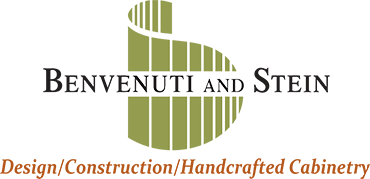Myths, Lies, Mysteries: Trade Secrets from an Interior Design Pro
by Janet McCann, McCann Associates, Inc.
“Solid wood is far superior to veneer”
This is a belief that undoubtedly began in the forties when veneer first came into the marketplace as a way to save cost in the production of furniture and cabinets. At the time the veneer was thin, the sub-material was inferior and the glue was not the quality of todays glues. Consequently, veneers would delaminate exposing crude particle board, not exactly a quality look! Since then the improvements in the quality of the veneer, the sub-material and the glue have greatly been developed and improved.
Maurice Jefferson, from Benvenuti and Stein reports that while some cabinetmakers use 2 mm thickness of veneer, he uses 10 mm. The early generation of particle board has been replaced by Medium Density Fiber (MDF) board which has a smooth and stable surface. It is available with low V.O.C.(volatile organic compound) and in thicknesses that can be bent into curved configurations. Glues have been improved for both stability and health reasons.
Comparing the quality differences between solid and veneer isn’t even the pertinent issue. The two different methods have completely different looks. Let’s look at the case of a table top. A table top made of solid wood is made of several boards approx. 9″ wide by 3/4″ thick Because of the thickness of the wood and the need for stability (that is to say: non-warping) the board is cut from the center of the log giving the board a look of what is called “cathedrals”. Think of an arch in the wood grain. The boards are glued together to the desired width of the table giving the table top the look of a series of arches. Typically, this produces a “country” look. If a more formal or unique look is desired there are many options possible by using veneer. There are many species of trees that produce highly figured veneers by not just the inherent character of the wood but by how the wood is sliced from the log. A veneer of burled ash is unique in itself; when the veneer is cut into pie shapes, a “sunburst” pattern can be achieved, creating a formal and unique look You can imagine this would produce a table top far different from the country table produced from solid wood.
Complimentary
Home
Consultation




